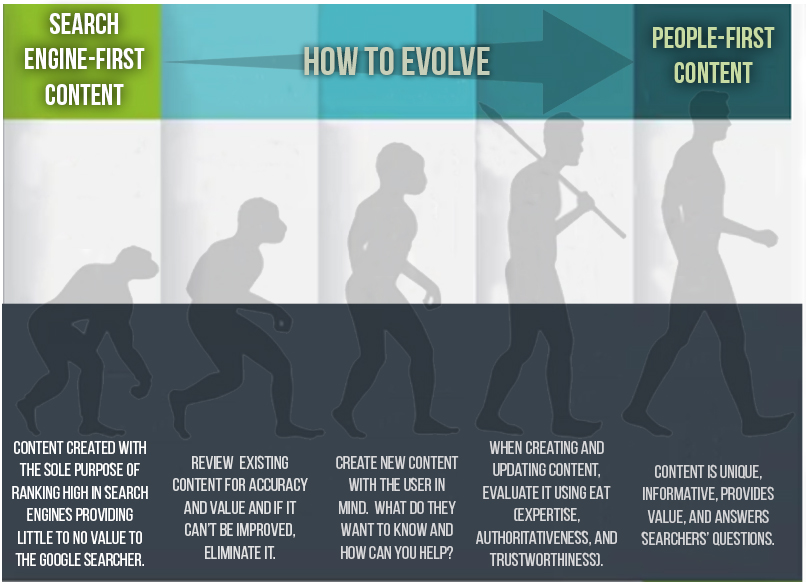SEO Guides, Tips & More!
Learn from Our ExperienceGoogle’s Helpful Content Update: The Survival of the Fittest
Understanding Google’s changing search algorithm often feels like deciphering the Rosetta Stone; puzzling to even the most seasoned website managers. Google’s Helpful Content Update which began its rollout in late summer, can appear scary and confusing to site owners on the surface.
Luckily, updates like this one are actually less confusing than they first appear. Google’s objective with any update is to yield the most helpful, people-friendly search results providing search engine users with the highest quality of content possible. This concept can be likened to Darwin’s Theory of Evolution where nature selects the fittest species to survive and thrive. The content that survives and thrives on Google after this update is fully implemented is the content that provides the searcher with the greatest overall value.
Here’s some good news. The ability to “trick” search engines into displaying certain content first is really a thing of the past. Updates like Google’s Helpful Content Update actually create more of an even playing field for content creators. So, what exactly is Google looking for and how can we curate content that is both valuable to searchers and to search engines? Fortunately, the answer is one in the same: to create People-First Content as opposed to Search Engine-First Content.

People-First vs. Search Engine-First
Creating People-First Content essentially is generating content that uses what is known as EAT. EAT is an acronym for the set of criteria that Google uses to help determine the overall quality of web pages. EAT stands for Expertise, Authoritativeness, and Trustworthiness. This means for content to rank well on Google, it should provide expert advice and originate from a source that is both an authority on the subject and one that has established enough trust to provide accurate information. People-First Content is content created for the people by the people.
Conversely, Search Engine-First content is created for the sole purpose of achieving high search engine rankings. But remember, on Google only the strongest survive, and Search Engine-First content is weak. It focuses on quantity rather than quality, rehashes content that already exists elsewhere, and/or content that claims to answer a specific question but fails to do so. Therefore, thanks to this recent update, Search Engine-First content results in low search engine rankings for those pages and poor site rankings performance overall.
Revamp and/or Eliminate Existing Content
Creating new content with a People-First focus only solves part of the equation. Not only do we have to create valuable content going forward but we also have to take inventory of the content which already exists on our websites under this new People-First lens. We must determine if our pages and blog posts fully answer questions, provide the most current and accurate information, and ensure that we utilize Google’s own SEO Guide of Best Practices. Content that goes against these things, should be archived/eliminated from our websites because having it there will drag the valuable content that we do have on our websites down by association. Google has something known as the classifier which runs continuously and determines which content is valuable and invaluable thereby impacting our site’s overall rankings.
Contact Us
If you have questions about the information outlined above, drop us a line!

